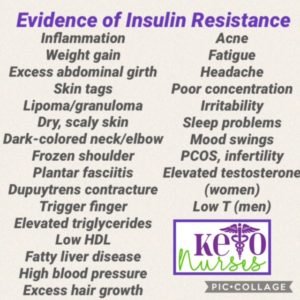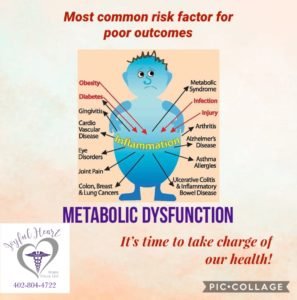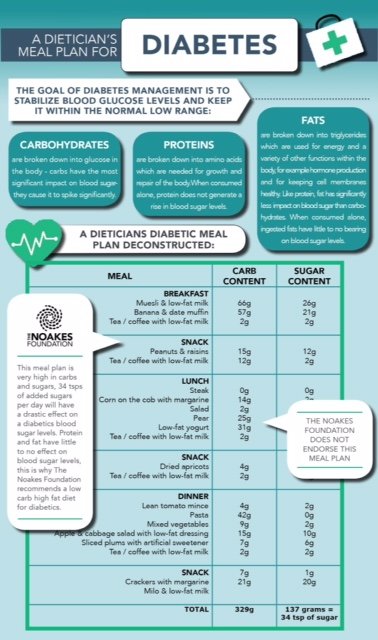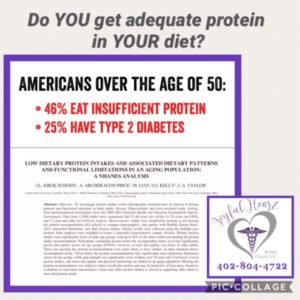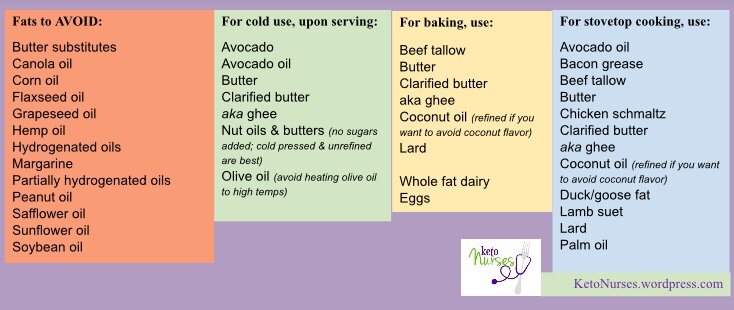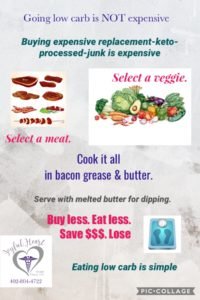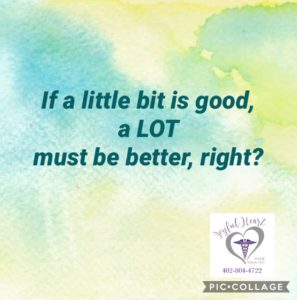Over the past 50 years, nutrition advice has been a bit fluid with regards to a variety of nutrients or macronutrients. In the most recent 5-10 years, a few grass-roots experts have come forward with even more changes they recommend for our eating health. Some physicians and authors are encouraging complete grain-free nutrition, while others advocate for a 100% plant-based diet. Now comes along this idea to cut carbs from our diets. Here, we will attempt to define and discuss carbohydrates, their purpose, sources, and whether or not we actually NEED those carbs.
First, let’s take a look at the 3 macronutrients: carbohydrates, proteins, & fats. These macronutrients are the largest sources of food and nutrients for our bodies. In the past, it was believed that 45-65% of our daily intake should be from carbohydrates, 10-35% % of our intake should come from proteins, and that 20-35% of our intake should come from fats. Fats were touted as being minimally necessary to bodily processes, while proteins & carbs were proclaimed as more important nutrients the body needed.
Carbohydrates in high quantities were thought to be necessary because they provide instant energy for usual daily activity, body processes, and exercise. Prior to 1980, when the first dietary guidelines were published, there had been little to no scientific research published regarding these macronutrients; however, some very strong personalities with governmental and financial support were able to advocate for dietary guidelines not too different from today’s high carbohydrate recommendations. With no supporting data and no real science to back up the 1980 nutrition recommendations, they were advertised and supported by a myriad of governmental agencies, non-profit organizations, and medical providers across the country; the media was complicit in assisting in “educating” the public on these rules, and magazines/newspapers published countless news articles encouraging the American public to reduce fat intake and significantly increase carbohydrate intake. (You can read more on this story here:
https://joyfulhearthousecalls.com/does-cholesterol-cause-heart-attacks-is-fat-bad-for-me/.)
Fast-forward 40 years and take a look at the devastation to our bodies by such high carb and nutrition-less food-like items we’ve been consuming. Prior to the 1980 dietary guidelines, there was little heart disease, type 2 diabetes, few strokes & heart attacks, and minimal obesity. There were fewer cases of cancers & inflammatory conditions like arthritis and lupus. How did people die in previous decades? Infection was the number 1 killer up until antibiotics became the mainstay of healthcare in the 1960s-80s. Accidents and injuries were another top cause of death, but heart disease and obesity did not become prevalent until more modern times. Looking at graphs that show our fat intake decline can be compared to the rates of heart disease, and you will easily see the inverse relationship between them; fat intake dropped while heart disease sky-rocketed.
And of course, as fats were cut from our plates, we replaced them with “healthier” carbohydrates. As manufacturers and food processing companies worked to make work easier and less laborious for their employees, nutrients were lost. As nutrient content began to fall, it was decided to supplement or “enrich” many of these foods with some vitamin or mineral to help make the food seem healthier and more nutritious to consumers. If you can find an older food label from the 1950s and compare to similar food item today, you will see a big difference in nutrient-density; today’s food-like items contain almost no nutrients, no vitamins, no minerals, nothing at all the body actually needs – except for carbohydrates.
And now, we come to the $6 million question – Does the body need all these carbs? Well, let’s look back at the hunter-gatherers a hundred years or more ago – even thousands of years ago. What carbs did they eat? Where did our founding pioneers obtain their carbs? What foods did the Native Americans thrive on? Looking back over hundreds of years, we can see that our ancestors primarily consumed proteins and fats – both of which were generally accessible year-round. During summer/fall seasons, there were some carbohydrates to be found in the fields & orchards – but they were SEASONAL and only consumed as special treats. These high carb-content foods were very rare on the family table, and breads/grains were a real treat due to the prolonged growing season and space required for farming them. It wasn’t until after WWII that industry began seeing food manufacturing as a money-making business; most families and communities farmed nearly every food item consumed. Families and communities bartered and traded foods & services; there just wasn’t room in the economy or the daily life for many “frivolities” to be eaten. Farmers and plant workers thrived on proteins and fats for sustenance and energy. Breads and cereals did not provide long-lasting energy for the typical 12-16-hour day, with rarely a “lunchbreak” for a mid-day meal. Jerky, or dried meats, was easy to keep in a pocket or bag for a snack “on-the-go.” While pondering on these thoughts, let’s go back to our question – Does the body need all these carbs? Our grandparents and great-grandparents will mostly say an unequivocal “NO” to this question because they lived on very few carbs during their entire lifetime. They did not see much need for them 100 years ago; some of them still keep carb intake to a minimum today, regardless of the “rules” that push high-carb diets on all of us.
Now then, the question becomes, “how many carbs should I eat?” Well, the Standard American Diet (SAD) guidelines typically recommend 250-300 GRAMS of carbs per day for the average American adult. How much is that, you ask? Take a look at this graphic from The Noakes Foundation:
Take a look at the sample menu; substitute some of your own favorites and if you’re really brave, look up the exact carb content on your food labels. This typical diet contains over 300 grams of carbohydrates for 1 day, AND an additional 34 teaspoons of refined sugars, for an ADDITIONAL 137 grams of carbs – the SAD is truly sad for Americans. Consider that the average body only needs 1 TEASPOON of glucose in the bloodstream ALL DAY. This sample meal plan for 1 day contains a total of 466 grams of carbohydrates – all of which will be converted rather quickly into glucose, floating around in the bloodstream and triggering all sorts of body processes in hopes of lowering the blood glucose level as quickly as possible. The intake of glucose triggers the pancreas to suddenly secrete a load of insulin which is programmed to seek out glucose molecules and transport them out of the bloodstream quickly; while the insulin is taking the glucose OUT of the bloodstream, it is taking the glucose INTO cells to be stored as fat; over time, this one process causes weight gain and insulin resistance. Insulin resistance is what happens when the body is overworked and forced to make and secrete a lot of insulin. I tell this story to my patients when I see them in the office: If you are working on an assembly-line and your rate of work is comfortable to you and you meet production at the end of your day, you feel good that you were able to meet your goals and produce a good, high-quality product. But what happens when your boss tells you to DOUBLE production? Do you work faster? Do you work more carelessly? Does your faster work put out high-quality product? Do you feel bad at the end of your day because you did not meet your standards? A similar process occurs when the pancreas is forced to make too much insulin to manage the extremely high glucose intake and the insulin becomes less and less effective, even though MORE quantity is being produced. This one faulty product (poor quality insulin) can cause a myriad of chemical & hormonal imbalances within the body, contributing to all sorts of chronic diseases, including type 2 diabetes.
So, if 400+ grams of carbs per day is actually RECOMMENDED, it’s no wonder that over 2/3 Americans are overweight & diabetic. How can we change this plan? Well, the dietary guidelines will be reviewed again in 5 years – that’s a LONG time to wait. You can change YOUR diet TODAY! I like helping people understand where all the carbohydrates are hiding – they are in MANY foods that experts have claimed to be HEALTHY for the past 50 years. I start by helping people see the worst sources of carbs – the junk foods, the soda, the sugary treats, the boxed cereals loaded with sugars, and fast foods. Once people are aware of the sources, it is MUCH easier to start making healthy choices. But how many grams of carbs do we actually need? Some current experts say we need as little as 10 grams per day; others say that staying under 50 grams is best. My suggestion to my patients is to start where you are and try to eat 100 grams LESS for a week or 2 and then decrease again and again, learning as you go. Read labels, identify foods with high carb content and start cutting portion sizes until that food is used/gone. I tell people that it’s important to start right where you are and to NOT expect yourself to make such a massive change overnight. While some people are able to go “cold-turkey” off carbs, many find it a serious addiction and very difficult to drop such a huge amount in a short time. The best method of understanding where you are, is to record your intake; if you have a smartphone or tablet, there are many apps available. My favorite app for this task is Cronometer because it’s accurate and pretty easy to use. Once you’ve recorded 3-4 days of intake, it’s easy to see what your macros are. Your macros are your macronutrients – carbs, fats, & proteins. These are the only 3 major nutrients we consume.
Back to our original questions: 1) What is low carb eating? Low carb eating is a way of eating that drastically cuts carbohydrate intake to less than 100 grams per day; some plans and experts recommend MUCH less, but the general definition of low-carb is less than 100 grams per day. 2) Is low-carb unhealthy? After reading this article, I hope your answer is a resounding “NO, low-carb eating is very healthy.” Eliminating wasteful, highly processed, very chemical-laden food like items actually rids your body of toxins and chemicals that are often linked to chronic diseases and cancers. 3) What do I eat if I’m eating low carb? This question is often one of the most commonly asked questions of all of us trying to teach this method of eating. Eliminating carbohydrates typically means no longer consuming any type of bread, rice, corn, potato, wheat, pasta, cracker, cereal, chip, juice, & most milk. Reviewing your daily intake record, you may find that much of your intake consists of these foods – a VERY common dilemma! However, I provide a list of resources to my patients, and will add them at the end here. I typically recommend eating eggs, bacon, unsweet sausage, most meat in small portions, and non-starchy vegetables, and all of it cooked and covered in healthy fats like REAL butter – NOT margarine. Other healthy fats are listed here:
My favorite method of cooking veggies is to roast them! Ahhhhh, so delish and easy to make; just chop into small fairly evenly-sized pieces and season to taste. I shake them in a large storage bag with lite olive oil to cover, then pour onto a large cookie sheet and bake on about 375 – 400 degrees for about 20 minutes or just until edges begin to slightly brown. Remove from oven and serve immediately. I also often serve with a small bowl of butter for dipping while eating. Trying to change our 60++% carb intake to 70% fat intake can take quite a while to understand AND implement. If we could learn to consume mostly fats with small portions of foods, we could nearly eliminate chronic diseases & medication use, and we could change the face of health care, while extending life span AND improving quality of life. Now, tell me, who wouldn’t like that?
Take a look at some of these resources and do your own research before deciding what you should do about carb intake.
References, Books, Websites, & Recipe sites for Low Carb Lifestyle
Books:
The Art & Science of Low Carb Living
Wheat Belly
Grain Brain
Eat Rich Live Long
Keto Living
Effortless Healing
Keto for Cancer
Pain Free
Metabolic Cardiology
Websites:
Facebook group – 2021 Keto Challenge with the KetoNurses
MeWe group: KetoNurses
www.buttermakesyourpantsfalloff.com
FREE YouTube Videos:
https://www.youtube.com/watch?v=wSuwDrbtkLo
Dr. Sarah Hallberg
Steve Phinney & Jeff Volek
Dr. Robert Cywes
Ivor Cummins
Bob Briggs (Butter Bob)
Recipes: www.alldayidreamaboutfood.com


